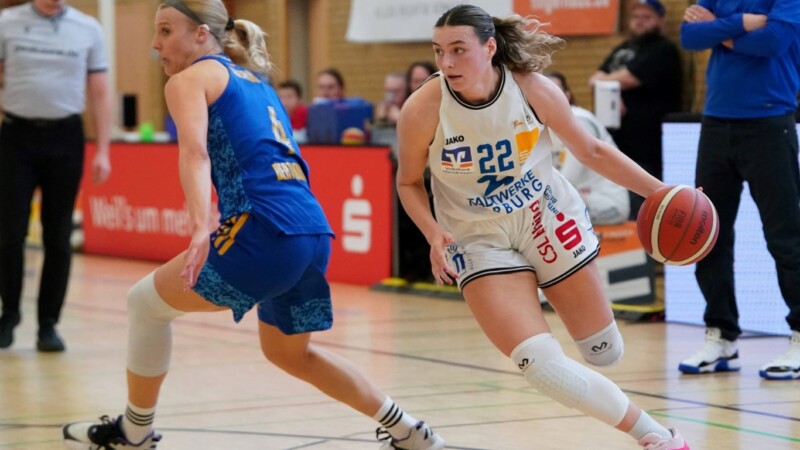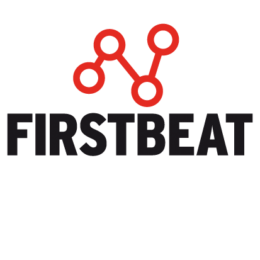
Will Graham is an Athletic Performance Coach at Liberty University, whose women’s basketball team is currently competing in Conference USA.
In this interview, Will talks to us about how Firstbeat helps support his coaching work with the women’s basketball team, the effect that increasing travel demands have on players, and why he thinks it’s important to use physiological data in his coaching work.
Will’s Coaching Journey

Will’s passion for basketball has been a constant throughout his life. Starting his career in a private sector role in Texas, Will gained experience coaching a wide range of athletes in different age groups before moving to collegiate coaching.
Will joined Liberty University, where he eventually took over as the Athletic Performance Coach for the women’s basketball team. Now, as he begins his fourth year in this role, his goal for the upcoming season is to help the team win their first championship.
Saving Time with Firstbeat Sports
Will has been using the Firstbeat system for three years with the women’s basketball team. He is also currently looking after the women’s soccer and softball teams, so his time must be managed carefully. Will believes that Firstbeat helps him to save time in his busy work schedule:
“The information that Firstbeat provides is what I use because I don’t have time to make reports, and I don’t have a staff or intern or a grad assistant to do all the extra stuff. I rely on what Firstbeat puts out, and so I use it every day. And because of my schedule, it makes it easier for me to give the information I need to the coaches.”
Firstbeat’s customer service is also something that Will values, knowing that he can get support if he has any questions. He says:
“I don’t have another tech company that sends a guy every year to make sure it’s working, to answer any questions in person. That makes all the difference.”
How Will Uses Firstbeat On A Day to Day Basis
The players wear the Firstbeat sensors during training sessions and games and Will uses the data he gets to see detailed information on each player, as well as a big picture overview. He says:
“I love the graphs that it gives, how I can look at a year-long progression or a season-long progression, and then weekly loads. That helps me a whole lot because I have input with practice, as far as, how long it is, and what we do in it.”
Using Firstbeat data to help tailor training sessions is one of the key ways Will uses the system. He describes some of the ways he uses the data:
“I look at the week-long, or the Acute Load, or the Acute vs Chronic Training Load, and see where we’re at. If we’ve had a lot of similar days, and we’re getting tired then I know we need a lower day or if we need a higher day than now, then I can use the data to make sure we’re on the same page with that.
We switched conferences recently, and we had a team in our conference, that we always struggled against because we have two very different styles. So when we have contrasting styles, we use the Firstbeat data to try to make practices different when we are about to play that team.
I can go into the dashboard and find that specific game that we played in years past, and see what were the loads like during those games. And then we can mimic those in practice to try to win, which is the ultimate goal.
We try to see what the games look like and how are those games different compared to other teams that don’t play that style. And then when we play that team, what do our loads look like, and then how can that help us in practice?”
Communicating the Data to the Team

Will finds that Firstbeat is also a useful tool for opening up conversations with players, and believes in making individual comparisons rather than comparing players against each other.
“I don’t like comparing one player to another player. I like comparing a player to themselves, and if they’re not recovering during out of bounds, or not recovering during free throws I can show them that, and I can show them in practice if they’re not recovering very well.
So then it’s a conversation of, ‘How are you sleeping?’, or ‘Did you change up your nutrition?’ It opens up conversations and ensures we take a holistic approach. It’s not just that a player isn’t in shape enough, so we need to run more. It’s not necessarily that. Firstbeat allows you to have more conversations about everything else. And then they can see from the report where they’re at and this is something we need to improve, and we can come up with a plan.”
The Importance of Using Physiological Data
For Will, using a system like Firstbeat helps him to take the guesswork out of coaching. Despite considering himself a relative newcomer to the coaching world, he believes that Firstbeat is user-friendly enough that it’s easy to get started with.
“I’ve been coaching for 10 years, but only five years for collegiate, and three years with an actual team that uses technology. The Firstbeat information that I get is detailed enough for me to help, but also it gives me a big picture as well. It’s very user-friendly, for someone like me, I’m relatively new to this.
It takes up a little bit more of my time, but I’d rather not guess. You can see when people are tired but if you’re a good strength coach, you want to figure out why. Firstbeat gives you enough information to figure out why someone is tired or why someone is not tired. It gives you insights into how a player is doing. Firstbeat gives me so much insight into why things are happening or not happening, from an internal load standpoint.”
The Increasing Demands on College Players
In recent years Will has noticed that external demands on players such as NIL deals (third-party brand sponsorships) and the possibility of players being poached and transferred have become more prevalent.
When it comes to the game itself, the increased travel demands have also affected the team. Will explains:
“Since we switched conferences, our travel has gone insane, I feel the travel demands are a big factor in college basketball now. The ACC now is from Stanford in California to North Carolina State or Virginia, on the East Coast. It’s a three-hour time difference we have, we’re on Virginia and the East Coast, and we have to now fly to New Mexico and El Paso, which is a two-hour time difference.
And then the Big 10, they’re going east to west, which is a three-hour time difference. Basketball is going to have to deal with the consequences of all that travel, so the information that I get from Firstbeat is going to be huge.
I need the information to make decisions on when we travel, how our bodies react when we do a practice or a game at a higher elevation and a two-hour time zone difference, and then when we travel back, what we need to do.
Do we need to go a high aerobic, or high anaerobic? What do we do to try to make sure we’re getting what we need to continue with the season?
The travel demands physically and mentally are not great, and the teams playing the bigger conferences are about to experience it.”
Looking to the Future with Firstbeat

For the upcoming season, Will plans to continue using Firstbeat daily, getting players ready for practice and preparing for games, and hopes to utilize it more for recovery moving forward. He says:
“I’m all in, and I would like to just keep adding features. I’m going to keep using it to help us. The biggest thing it helps us with is to make sure we’re getting players ready for practice and that the practices are what we want them to be. Are the practices hard enough or easy enough? For a return to play is what we’re seeing and what we’re doing actually what’s happening? We want the data to reflect our goals, and if it’s not reflecting that, then we need to adjust.”
Want to learn more about how Firstbeat Sports can be used in basketball coaching? Watch our free webinar recording on Mastering Data-Driven Decision Making in Pro Basketball here.
If you liked this article, you should subscribe to our newsletter.
You might also be interested in

From Data to Court – Using Firstbeat in Women’s Basketball to Optimize Training and Recovery
In the world of competitive sports, every advantage counts. For women athletes, whose training needs and recovery patterns often differ from their male counterparts, understanding the intricacies of internal load…

NCAA Basketball: Challenging Players With the Right Training Load
The ability to track intensity and quantify training loads using technology plays a big role in today’s game, giving team experts the ability to see in specific terms how individual athletes are impacted by training and how they respond at a physiological level.

How I Use Firstbeat in Professional Sports to Identify Trends in Players’ Fitness
This article is written by Domenik Theodorou, a Firstbeat Sports client and Performance Coach at RASTA Vechta, a professional basketball team competing in the Basketball Bundesliga (BBL). Before his current…

